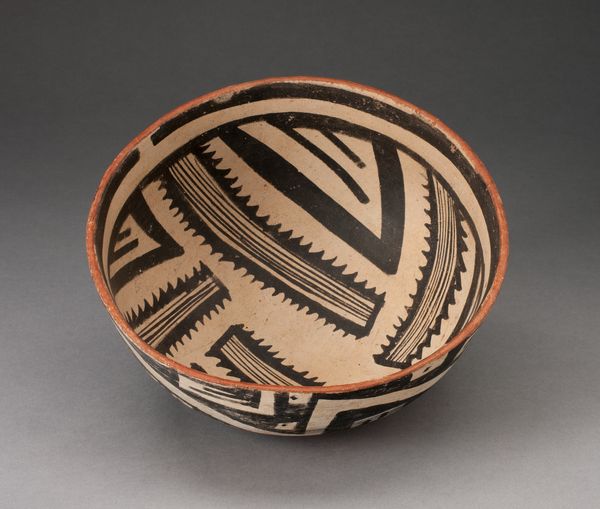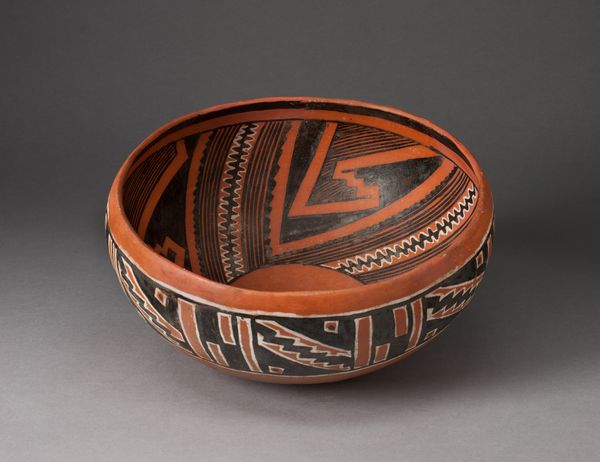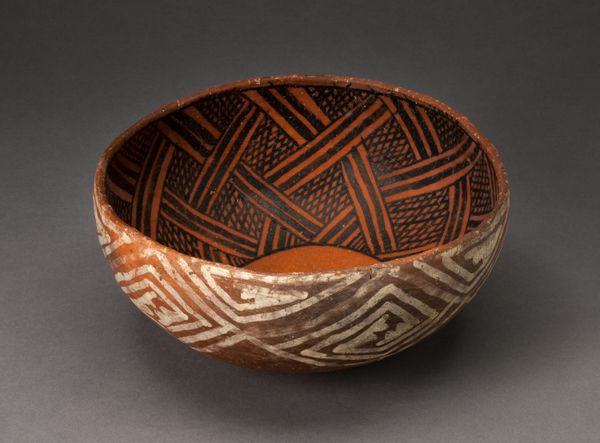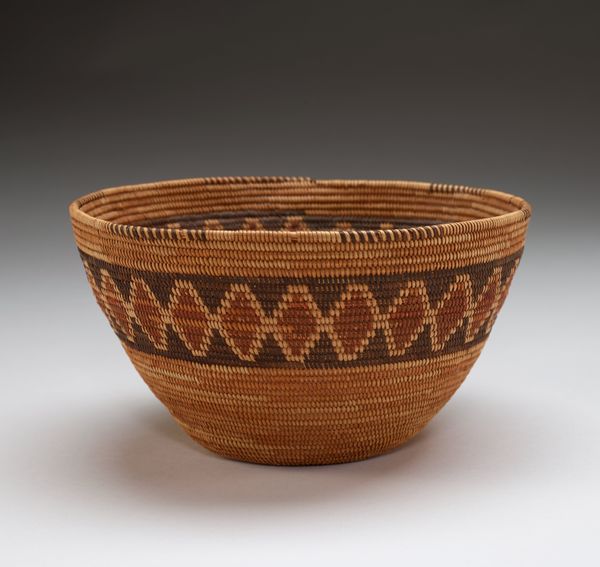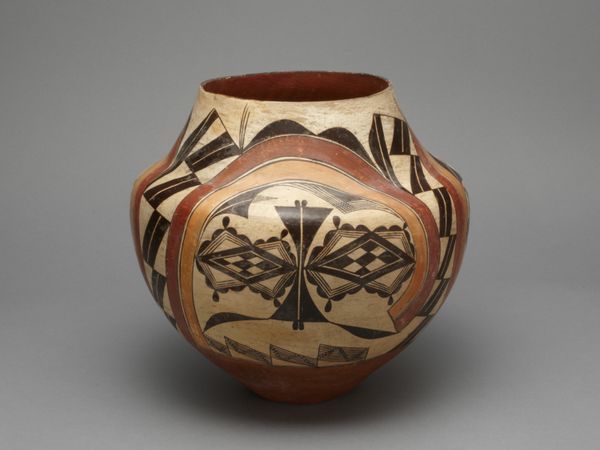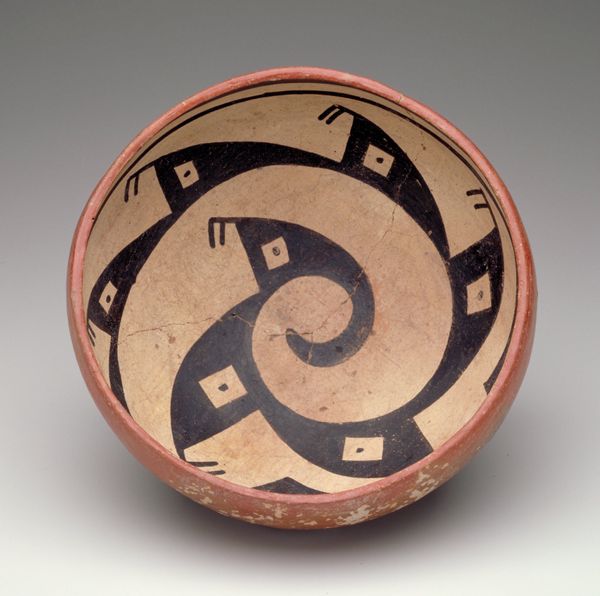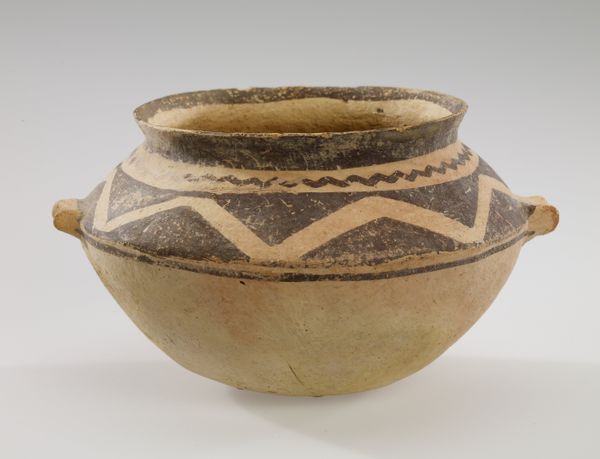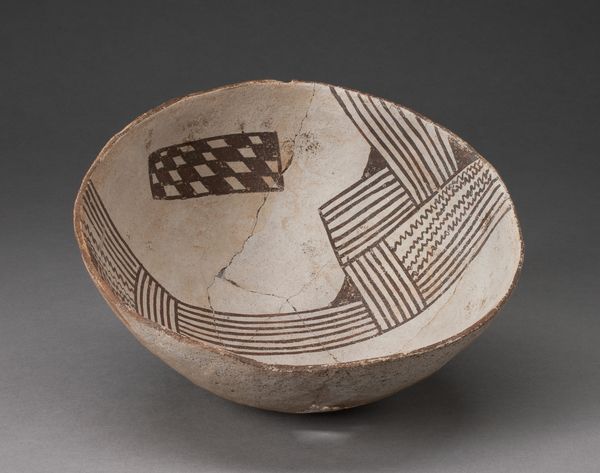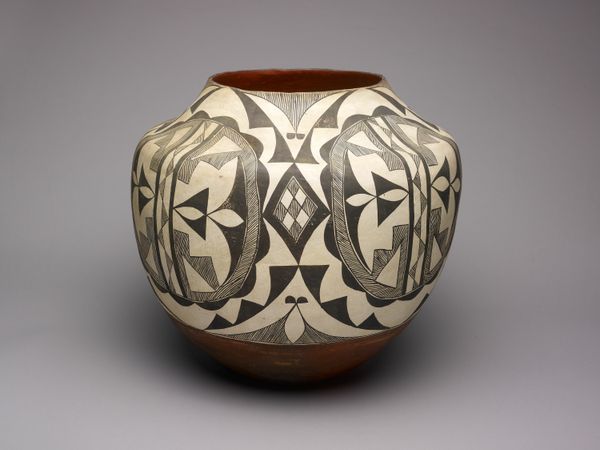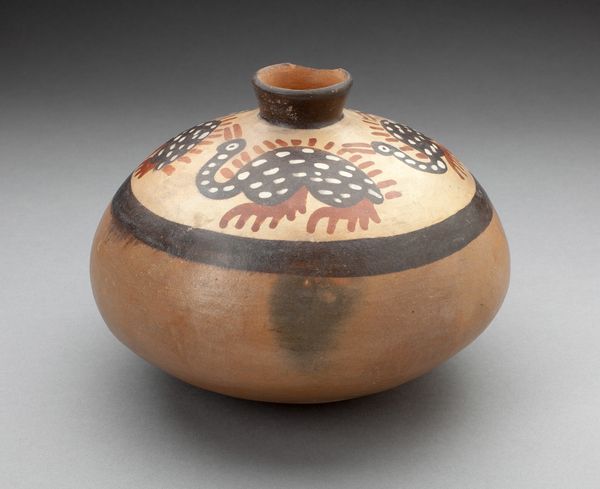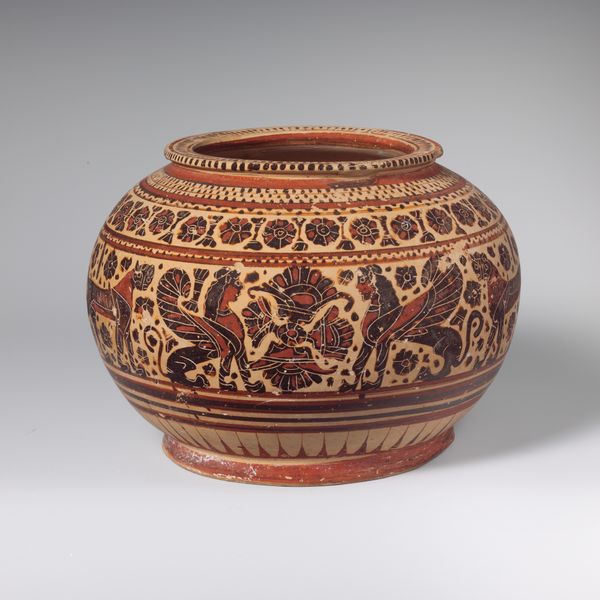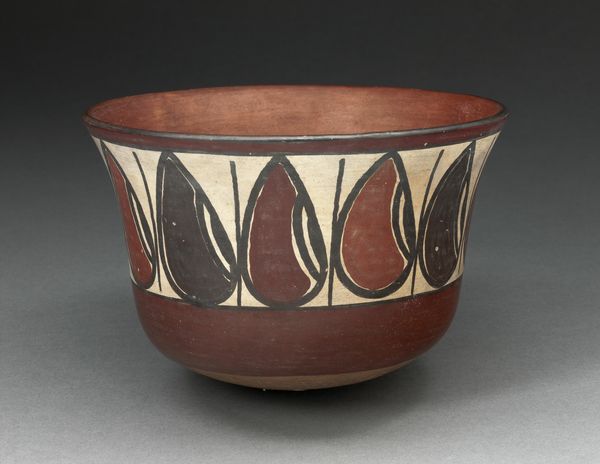
ceramic, terracotta
#
ceramic
#
geometric
#
ceramic
#
terracotta
#
decorative-art
#
indigenous-americas
Dimensions: 4 5/8 x 7 13/16 in. (11.7 x 19.84 cm)
Copyright: Public Domain
Curator: Looking at this ceramic "Bowl," dating roughly from 1250 to 1450, a Salado creation held in the collection of the Minneapolis Institute of Art, the starkness of the design immediately strikes me. Editor: The contrast between the creamy surface and the dense black patterning creates such a graphic impact. The rhythm, and geometric dynamism is compelling. It feels strangely modern despite its age. Curator: Precisely. Though rooted in Indigenous Americas, this vessel embodies the perennial human drive to impose order on chaos through geometry. The stepped designs and repeated lines echo cultural ideas about balance and connectivity with nature. I wonder if the shapes and lines might mirror ceremonial elements? Editor: Perhaps. Though I’m primarily drawn to the spatial play itself: how those solid blocks interact with the delicate lines, and the jagged edge details mediating between those forms. It suggests an underlying architecture of relationships. Curator: It evokes not just an architecture of space, but an architecture of meaning. Consider the persistent presence of step motifs in various indigenous cultures—often interpreted as symbolic pathways between worlds, between human and divine. It hints at underlying cultural and spiritual narratives of those ancestral worlds, you might say, preserved in symbolic form. Editor: Yes, there’s a dialogue here between function and pure design—how that outer painted surface emphasizes the concavity of the interior, urging interaction while remaining a defined abstract aesthetic in itself. Curator: Its aesthetic strength reminds us that cultural artifacts carry stories, embodying the experiences and values of a people across time. A vessel like this connects us with centuries past. Editor: Definitely a masterful interplay of form, function and pattern. Curator: Indeed. A compelling instance of material culture speaking eloquently through design.
Comments
minneapolisinstituteofart about 2 years ago
⋮
The Salado lived in a relatively small area of west-central Arizona. This area formed the crossroads of three cultural traditions: the Ancient Puebloan, Mogollon and Hohokam. According to recent research, the Salado may not represent a separate culture but a variation in the customs of one of the three local cultures. Salado pottery is unique and easily identifiable. The design on this bowl includes a break in the boldly painted, black line just below the interior rim, which is a common element in Salado pottery.
Join the conversation
Join millions of artists and users on Artera today and experience the ultimate creative platform.
